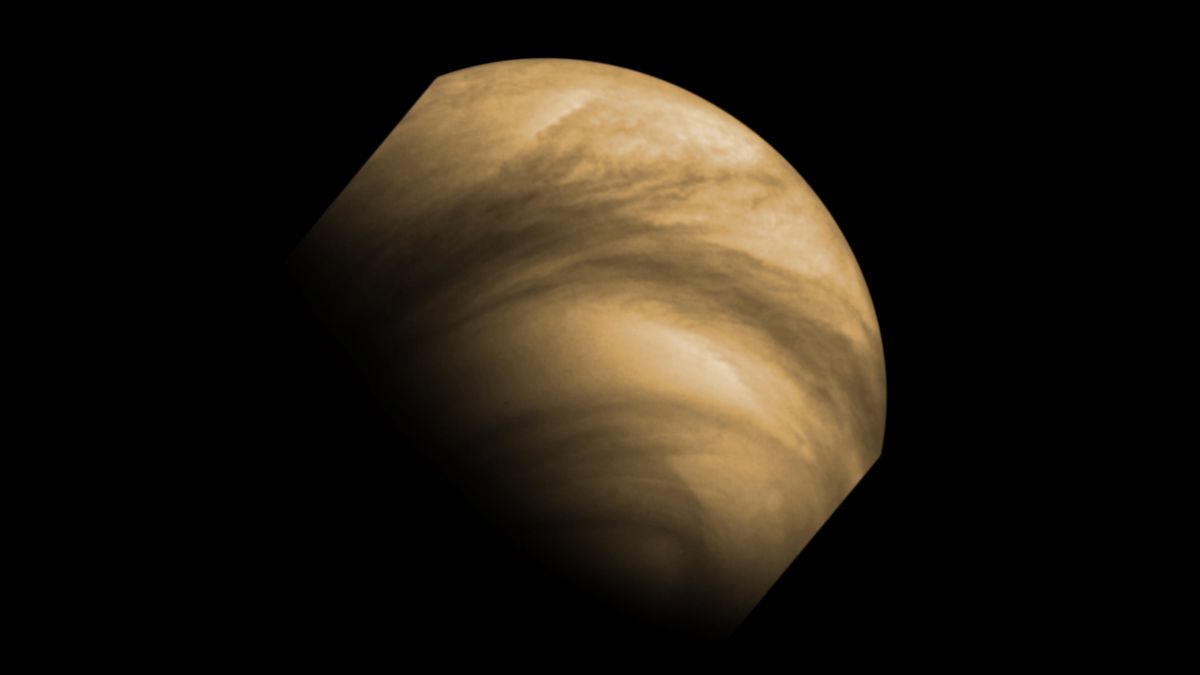When an asteroid strikes, there's typically at least one undeniable outcome: an asteroid mess. The most obvious part of this mess tends to come in the form of a nice and cinematic crater, but there's also a second part. It's called the "ejecta," and represents all the stuff that gets punched up off the ground when the impact happens — and things get a little weird when we start thinking about where those ejecta particles go.
How far can they get? Can they shoot 10 miles upward? 100 miles? 1,000 miles? Those aren't very far-fetched possibilities, considering how utterly teensy such particles can be. But, is there a limit? Well, maybe, but before hitting that limit, some scientists argue that the particles could get unfathomably far — like, all the way to another planet far. And, as if that weren't interesting enough, one crew is also thinking about what this ejecta can hold.
Earth ejecta, for instance, could hold Earth life.
"We're trying to figure out how much mass is reaching Venus from Earth, and how many cells can that mass carry," Emma Guinan, first author of a paper on the topic and a researcher at the School of Earth and Space Exploration at Arizona State University, told Space.com during the 2024 American Geophysical Union conference in Washington, D.C. "What if there was life, but it's transferred from Earth because there's already life here?"
Here's the theory
Guinan and her research team think it's possible that asteroids that impacted Earth over the last few billions of years may have periodically forced Earth material — holding things like plant cells and single-celled organisms — into space, and that if a tiny amount of those cells survived the harsh journey through space, they could've reached Venus. If true, those robust cells may still be living in Venus' atmosphere. Some could have even conglomerated together, speckling the world with the organics we have long assumed are confined to ours.
"Lucky for us, when cells are being transferred, they do tend to come together," she said. "So, there would be multiple cells being transferred at the same time. It wouldn't just be like one cell all by itself getting delivered to Venus."
The entire concept is called "panspermia," formally defined as the transfer of life from one part of the universe to another, and, surprisingly, it isn't really a wild new thing. It has been talked about for quite a while, and some scientists even believe that life on Earth may have arrived through panspermia, originating somewhere in deep space before being brought to our planet.
Yet, if you're wondering why we're fixating on Venus with this discussion — theoretically, as many publications would suggest, panspermia could happen across the solar system — it's because scientists discovered evidence of phosphine, a compound of phosphorus and hydrogen, in the amber world's atmosphere. Phosphine is considered an indicator for life (as we know it, of course).
A billion cells over a billion years
"We found there's roughly 1 billion cells per billion years being transferred to Venus," Guinan said of her team's calculations. This doesn't, however, mean that exactly one cell per year gets sent to Venus, because impactors that create the ejecta holding such cells aren't exactly regular occurrences. The calculation simply means that an average of a cell per year probably makes it from Earth to its evil planetary twin.
Plus, there is an important caveat: "We're not saying that all cells are viable. We're not even saying that they're surviving the transfer, or surviving in the atmosphere — but they are being transferred."
As Guinan points out, the area in Venus' atmosphere where such transferred life may exist is within a range from 28 to 37 miles (45 to 60 kilometers) above the planet's surface. This is a cloud layer, and she says it exhibits very similar temperature, atmospheric pressure, and other environmental factors we're experiencing right here on Earth's surface. However, because it's in the planet's clouds, it's pretty different from the conditions we live in. "It's not really super connected to life," she said, "so that's why everyone's kind of like, 'Okay, can these microbes survive in these conditions?'"

This brings us to the next steps in this saga —- answering the questions that could give this theory some footing.
First of all, can these cells in ejecta particles survive the transfer from Earth to Venus? Space isn't for the weak; it's filled with radiation, micrometeorites, and who knows what else. But, okay, say some cells miraculously survived the journey. We'd need to know whether those cells managed to survive the atmosphere of Venus as well, which is famously hot, thick, and honestly hellish in many areas (recall the evil twin reference).
And then, those cells would need to successfully proliferate within the atmosphere of Venus.
Guinan says that proponents of the theory believe more infrared imaging and spectroscopy analysis of Venus' atmosphere could provide some answers to these major questions, and thinks a mission to Venus would prove invaluable in this case. NASA, for instance, is currently planning two missions to the planet — DaVinci and Veritas — both of which should be able to dissect new features about Venus' clouds. Depending on what they find, we may begin wondering about something peculiar.
Could our first detection of life beyond Earth simply be life from Earth?

.jpg) 5 hours ago
1
5 hours ago
1

 English (US)
English (US)